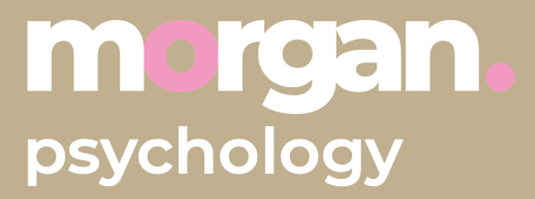Start with something simple: A case for less is more in eating disorder care
Sometimes, among the most complex problems, the most impactful move is to find the simplest next step.
In mental health—and particularly in eating disorder treatment—we often assume that the more complicated the problem, the more elaborate the solution must be. We lean into complex case formulations, intensive protocols, and comprehensive service delivery models. Yet over and over, psychological research reminds us that it’s often the small, consistent actions that lead to the most meaningful change.

It’s often the small, consistent actions that lead to the most meaningful change.
Image used with permission from Merre Granola. HOME | Merre Granola
When Complexity Impedes Progress
This is not just a theoretical issue—it has real-world consequences for client outcomes and clinician burnout.
In cognitive psychology, we know that too many decisions or inputs can overwhelm our capacity to act. This is known as cognitive overload. Research shows that when faced with too many options or too much information, we are actually less likely to take action. In practice, this might look like a client—or a clinician—feeling stuck because the treatment feels too big, too theoretical, or too hard to begin. In contrast, clear and simple pathways create momentum. Small, manageable actions—when grounded in evidence—help people begin to build hope and agency.
The Evidence Tells Us That Small Steps Work
In depression treatment, Behavioural Activation has been shown to be as effective as full cognitive behavioural therapy (CBT) in many cases. The approach is beautifully simple: don’t wait to feel better—start doing something small and meaningful, and mood improvement often follows.
In Habit formation theory, long-term change starts with minimal, doable actions. It’s not about overhauling someone’s life; it’s about helping them succeed at a single step and build from there.
And Hope Theory also explains that hope isn’t about false optimism—it’s about creating clear goals, identifying one way forward, and believing you have the agency to act. These models remind us that effective change doesn’t always begin with deep insight or comprehensive plans. In eating disorder treatment, too, sometimes progress starts with a sandwich, not a strategy. And learning to manage anxiety might begin not with a worksheet or psychoeducation, but with offering a heat pack in session—helping the body feel just a little safer, so the mind can begin to follow.
The theme across these frameworks is the same: clarity, action, simplicity.

Learning to manage anxiety might begin with a clinician simply offering a heat pack to a client in session—helping the body feel just a little safer, so the mind can begin to follow.
Image used with permission from The Hottle No.1 Handsfree Heat Pack & Clay Insert in Australia – thehottle
The Words We Use Matter: A Case Against ‘Severe and Enduring’
Our field has made enormous progress over recent decades. We now have multiple evidence-based models—eating disorder-focused cognitive behavioural therapy, family-based treatment, specialist supportive clinical management, among others—and a growing recognition of key factors in care: early intervention, neurodiversity-affirming practice, the critical value of lived experience and genuine co-production, and the central role of families in effective treatment. But we must also acknowledge that this progress hasn’t reached everyone. Many individuals—especially those from marginalised communities or with complex presentations—continue to face gaps in access, representation, and outcomes. Holding both of these truths is essential: we have come a long way, and we still have much further to go.
But as we advance as a field, we must also pause to ask: have we, in our pursuit of excellence or innovation, inadvertently conflated complexity with quality?
Have we built service models that require intensive buy-in, extensive teams, or multi-session engagement before a client feels supported to take the first step?
We often speak of “multidisciplinary teams”—which are essential. Yet the National Eating Disorder Collaboration (NEDC) identifies that a minimal multi-disciplinary team might simply be a mental health clinician and a well-connected general practitioner working collaboratively.
We talk about “renourishment,” which too often begins with a comprehensive meal plan—when it could start with simply eating a snack in session, or with a parent choosing one manageable place to begin that builds their confidence. We talk about goal setting, but it doesn’t have to be SMART goals or worksheet-heavy; sometimes it’s simply, “What’s one small thing you could do before we meet again?” These are not shortcuts. They are evidence-informed, person-centred interventions that meet clients where they are, not where we wish they were.
What Do We Gain by Emphasising Complexity?
It’s worth asking: what do we gain—individually, professionally, systemically—by presenting eating disorders as complex, treatment-resistant illnesses? This framing has helped attract funding, research interest, and public empathy. It has highlighted the seriousness of delayed intervention and positioned eating disorders alongside other serious psychiatric illnesses.
But there’s a cost. When complexity dominates the narrative, it can reinforce hopelessness—for clients, families, and clinicians. It can lead to over-engineered solutions and under-confidence in simple, foundational steps. And it can obscure the truth: while eating disorders can be serious and long-standing, they are also treatable. Recovery is absolutely possible—especially when we act early, stay grounded in evidence, and focus on small, achievable steps.
We must be careful not to let flawed constructs become self-fulfilling prophecies. When our frameworks carry implicit messages of futility, we risk embedding hopelessness into the therapeutic process itself.

Recovery is absolutely possible-especially when we act early, stay grounded in evidence, and focus on small, achievable steps.
Simplicity is Not the Opposite of Sophistication
I recently had to deliver a 5-minute pitch on a complex topic with four slides to support the content. This was incredibly difficult. Every word mattered. This five-minute pitch took hours of preparation—even though the content was within my expertise.
Now contrast that with a subject expert who dives deep into their passion—delivering detail after detail, slide after slide. You walk away knowing they are an expert. But you may also walk away thinking: “I’m not sure what they said—or why it mattered to me.”
The narrative is lost amongst the complexity. You switch off.
And my brain is not in a state of starvation or heightened anxiety, or depressed mood, so imagine what happens when you speak to a neurodivergent client with a long-standing eating disorder who has had multiple negative treatment experiences when they come and see you for the first time. They are not going to hear you unless you first listen, quiet the noise, and identify one simple, evidence-aligned starting point—a change the client chooses—that can begin to build hope.
Why We Still Need Grounding in Evidence-Based Treatment
There’s a reason eating disorders are described as complex, serious, and potentially chronic conditions. The urgency around early, evidence-informed intervention is accurate.
Yet in trying to present our services as comprehensive, innovative, or bespoke—and in our efforts to spotlight these illnesses to attract funding and care—we inadvertently bury the value of what is clear, structured, and already effective. But without a clear blueprint for treatment—without anchoring our work in models that are measurable, replicable, and designed for this purpose—we risk drifting. Where are we going with this treatment? What are we aiming to change? And how will we know if we’re making progress if we’re not measuring it against the benchmarks that decades of research have established?
At the core of our work is a shared goal: to help clients improve their relationship with food, their bodies, and their sense of self. This is complex. But it becomes far more manageable when we take one step at a time, stay oriented to a clear treatment path, and know how to recognise when we’re stuck—so we can course-correct with care and purpose.
Simplicity does not mean we are doing less. It means we are doing what matters, clearly and consistently.
- If you are a mental health clinician looking to get started on learning how to treat eating disorders, sign up for our online course – On-demand and cohort-based learning – Morgan Psychology
- If you are a carer or someone affected by an eating disorder, we have created simpler recovery kits, aligned with the evidence-based treatments to help you get started. – Recovery Hugs – Support at home for eating disorder recovery
References
- Iyengar, S. S., & Lepper, M. R. (2000). When choice is demotivating. Journal of Personality and Social Psychology.
- Jacobson, N. S., et al. (1996). A component analysis of cognitive-behavioural treatment for depression. Journal of Consulting and Clinical Psychology.
- Lally, P., Van Jaarsveld, C. H. M., Potts, H. W. W., & Wardle, J. (2010). How are habits formed: Modelling habit formation in the real world. European Journal of Social Psychology, 40(6), 998–1009. https://doi.org/10.1002/ejsp.674
- Linardon, J., Wade, T. D., de la Piedad Garcia, X., & Brennan, L. (2017). The efficacy of cognitive-behavioural therapy for eating disorders: A systematic review and meta-analysis. Journal of Consulting and Clinical Psychology, 85(11), 1080–1094. https://doi.org/10.1037/ccp0000245
- Lock, J., & Le Grange, D. (2013). Treatment Manual for Anorexia Nervosa: FBT.
- Martell, C. R., Dimidjian, S., & Herman-Dunn, R. (2010). Behavioral Activation for Depression.
- Singh, S., Mahato, N. K., Ramachandran, V., & Keogh, E. (2024). Effectiveness of habit-based interventions on health behaviour change: A systematic review and meta-analysis. Health Psychology Review. Advance online publication. https://doi.org/10.1080/17437199.2024.XXXXXXX
- Snyder, C. R. (2002). Hope theory: Rainbows in the mind. Psychological Inquiry.
- Sweller, J. (1988). Cognitive Load Theory and the format of instruction. Cognitive Science.
- Treasure, J., et al. (1997). SSCM for anorexia nervosa.
- Waller, G. (2009). Evidence-based treatment and therapist drift. Behaviour Research and Therapy, 47(2), 119–127.
https://doi.org/10.1016/j.brat.2008.10.004 - Wildes, J. E., Forbush, K. T., Hagan, K. E., Marcus, M. D., Attia, E., Gianini, L. M., & Wu, W. (2017). Characterizing severe and enduring anorexia nervosa: An empirical approach. International Journal of Eating Disorders, 50(4), 389–397. https://doi.org/10.1002/eat.22651
